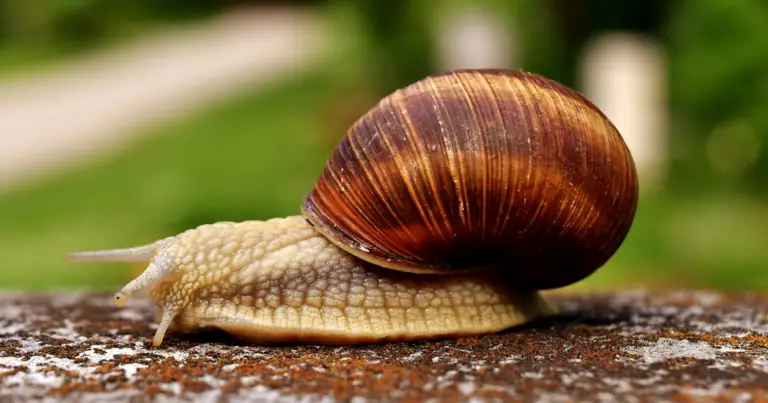Is a Snail an Insect? Unraveling the Mystery

Have you ever wondered, Is a Snail an Insect? Sometimes, you’ve observed these creatures in your garden or local park and pondered this question. This article will explore this interesting topic, providing you with a better understanding of snails and their classification.
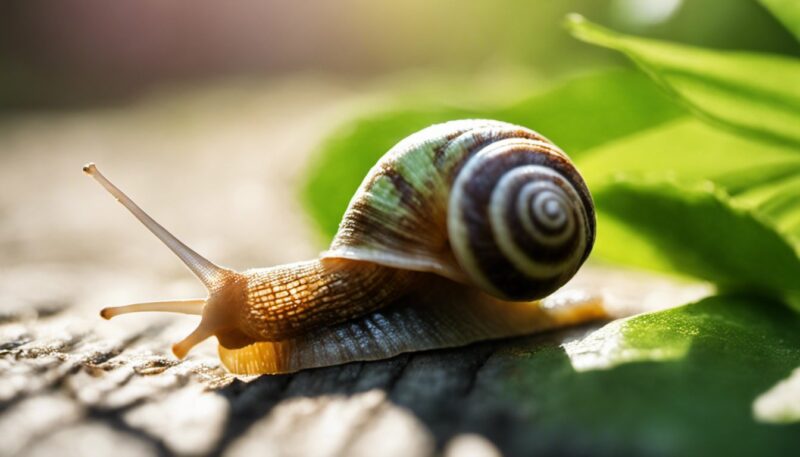
As you examine snails more closely, you might notice that they share some traits with insects, such as having an exoskeleton and similar behaviors. However, snails are not classified as insects. They are part of the gastropod class, distinguishing them as separate creatures within the animal kingdom. Snails are not bugs or insects, although they have some common characteristics.
In the following sections, we will delve deeper into the world of snails, explaining their feeding habits, habitats, and the reasons for their distinct classification. By the end of this article, you will have a clear and confident understanding of whether or not a snail is an insect.
Contents
Table of Contents
Snail: An Overview

Snails are fascinating creatures belonging to the class Gastropoda within the phylum Mollusca. They are invertebrates, meaning they don’t have a spine. There are thousands of species of snails, and they can be found in various environments, such as in forests, oceans, lakes, and streams.
Gastropods come in various forms, with some having external shells, like land snails and sea snails, and others lacking shells, such as sea slugs and terrestrial slugs. The shells are made from calcium carbonate and protect the snail. For example, the Giant African Land Snail is one of the largest land snails and can have a shell measuring up to 30 centimeters in length.
Snails have a distinct “foot” that helps them move, with a slimy secretion assisting in their movement. Their eyes are located on eyestalks, which are long projections on their heads. Some snails also have tentacles for sensing their surroundings. The coiled shell of snails provides not only protection but also serves as an internal chamber for breathing and circulation.
Snails are highly adaptable, inhabiting diverse habitats from tropical forests to ponds to your backyard garden. Land snails primarily live on vegetation, while water snails, like the Apple Snail, inhabit freshwater environments. On the other hand, sea snails often reside in oceans or other saltwater bodies.
Regarding diet, snails are generally herbivorous, feeding on leaves and algae. However, some species, like whelks and cone snails, are carnivorous, preying on other small invertebrates. Snails have thousands of teeth on their radula, a specialized tongue-like structure, for grinding and scraping their food.
Reproduction in snails can be quite fascinating, with some species being hermaphroditic, meaning that they contain both male and female reproductive organs. The life cycle of a snail typically involves fertilization, hatching from eggs, and growing into adults. Snails are known to retract into their shells for protection from predators, and many are nocturnal, meaning they are more active during the night.
Snails can not only be found in nature but are also kept as pets, with certain species like the Achatina snail being quite popular. Other types of mollusks related to snails include bivalves like clams and cephalopods such as squid and octopuses.
Definition and Characteristics of Insects
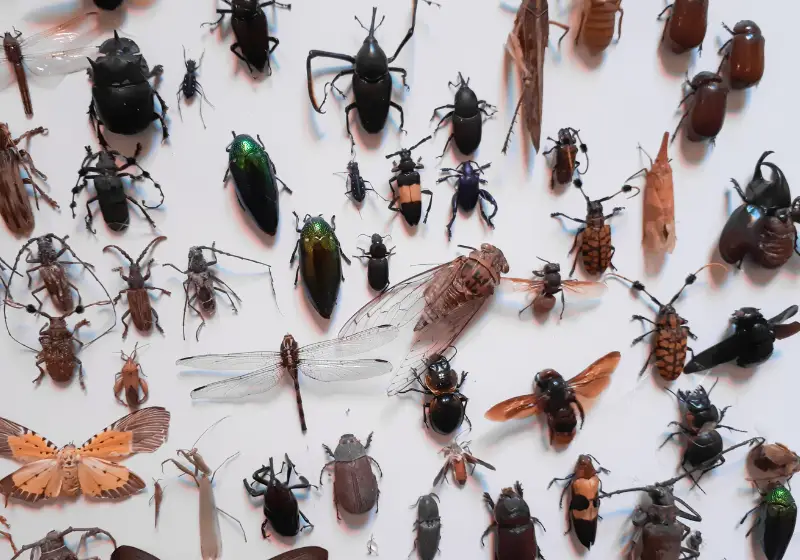
Insects are an incredibly diverse group of animals that belong to the class Insecta within the phylum Arthropoda. As members of the arthropod phylum, insects possess an exoskeleton made of chitin, which provides support and protection to their bodies. Some common examples of insects include ants, beetles, wasps, and ladybugs.
Insects have three primary body regions: head, thorax, and abdomen. Their bodies are segmented, typically with six legs attached to the thorax. One of the distinguishing features of insects is their ability to navigate in complex environments, thanks to their well-developed sensory organs such as antennae.
In addition, many insects possess wings that allow them to fly, which can also be found in the thorax region and facilitate their movement and ability to escape predators.
Insects exhibit diverse habits and behaviors, including a complex life cycle with larval and adult stages. During their larval stage, insects often have completely different appearances, diets, and habitats from their adult forms. This metamorphosis into adult insects allows them to occupy different ecological niches and avoid competition with other species.
As a group, insects are essential to ecosystems and human activities. They can help pollinate, recycle waste materials, and serve as food sources for larger animals. However, they can also act as pests, causing damage to crops or acting as disease vectors. This is why pest control is crucial in managing insects in gardens and other cultivated areas.
It is essential to note that garden snails are not considered insects. Snails belong to the Gastropoda class and are easily distinguished by their soft, unsegmented body and hard external shell. Unlike insects, snails lack segmented bodies, wings, and antennae.
In summary, insects are a highly diverse arthropods with various characteristics, habits, and behaviors. While they play vital roles in ecosystems and many human activities, they can also cause harm, making them a target for pest control. On the other hand, snails are not insects and can be identified by their distinct shell and lack of segmented bodies, wings, and antennae.
Why do snails have shells, but slugs don’t?
Distinctions Between Snails and Insects: Is a Snail an Insect
When exploring the differences between snails and insects, it’s important to note that they belong to separate groups within the animal kingdom. Snails are part of the Mollusca phylum, while insects belong to the Arthropoda phylum. Let’s dive into the specific distinctions between these creatures to understand their unique characteristics better.
One of the most visible differences between snails and insects is their body structures. Snails possess a soft, muscular foot that allows them to glide along surfaces, while insects have legs that usually consist of three pairs (six total). Additionally, snails are easily identified by their coiled shell made of calcium carbonate, which protects them.
Some slugs, which are similar to snails but without an external shell, have an internal shell that is less visible. Insects, conversely, have an exoskeleton composed of chitin that provides support and protection.
Another distinction can be found in snails and insects’ heads and sensory organs. Snails have tentacles with eyestalks on top that allow them to sense their environment, whereas insects have antennae as their primary sensory organs. Insects also feature compound eyes and, in some cases, wings for flight.
The teeth of snails, called radula, are used for scraping and grinding food, while insects have specialized mouthparts adapted for their specific diets.
Regarding reproduction, snails are typically hermaphrodites that possess both male and female reproductive organs, enabling them to reproduce without mating with another snail. Insects usually reproduce sexually with separate males and females, and their eggs, larvae, and adult stages often take on different forms.
Understanding these distinctions between snails and insects will help you appreciate the immense diversity in the animal kingdom and the unique features that set them apart. Whether you encounter them in your garden or observe them in nature, recognizing these differences can enrich your experience and knowledge of these fascinating creatures.
Snails in Ecosystem and their Adaptations
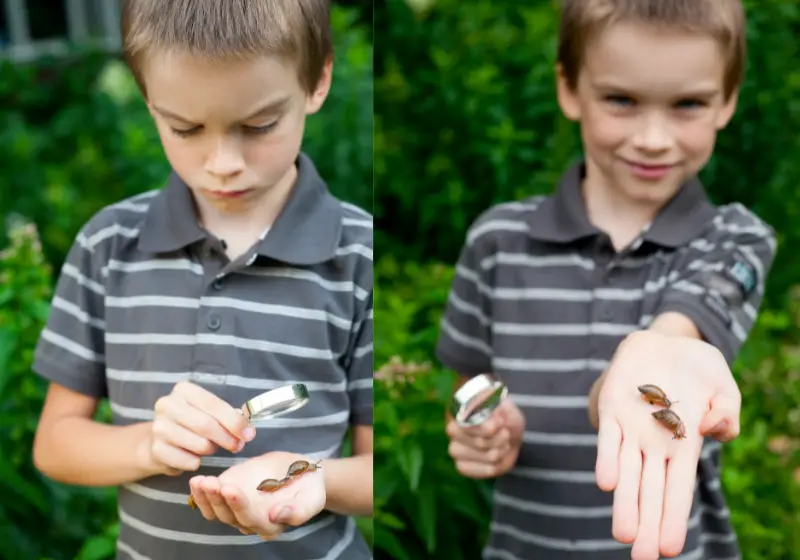
When you think of snails, you might picture small, slow-moving creatures with spiral shells. However, snails are incredibly diverse and adaptable invertebrates in many habitats, including forests, oceans, lakes, and streams. Their unique features and adaptability make them an essential part of their ecosystem.
Snails can be herbivorous, feasting on plants in your garden, or carnivores consuming other invertebrates. They have an extensive repertoire of adaptations, allowing them to flourish in various environments. For example, the shell of a snail, composed of calcium carbonate, protects them against predators and harsh environmental conditions.
One fascinating aspect of snails is their hermaphroditic nature, meaning each individual possesses both male and female reproductive organs. This gives them a greater chance of finding a mate, increasing their adaptability within their ecosystem.
Snails have developed specialized gills in aquatic environments, enabling them to breathe underwater. On the other hand, land snails have evolved a lung-like structure that allows them to extract oxygen from the air. These adaptations help them survive and thrive in diverse habitats like rivers, lakes, and even your backyard.
Snails play a vital role in the ecosystem by contributing to nutrient cycling and decomposition. Their consumption of plants helps to break down and recycle organic material, while their waste products provide essential nutrients for various plants and animals.
In conclusion, it’s essential to recognize the importance of snails in an ecosystem. Their unique adaptations, such as hermaphroditic reproduction and respiratory structures, allow them to thrive in various habitats. Snails give us fascinating snail facts and contribute significantly to maintaining healthy ecosystems.
Reproduction and Development of Snails
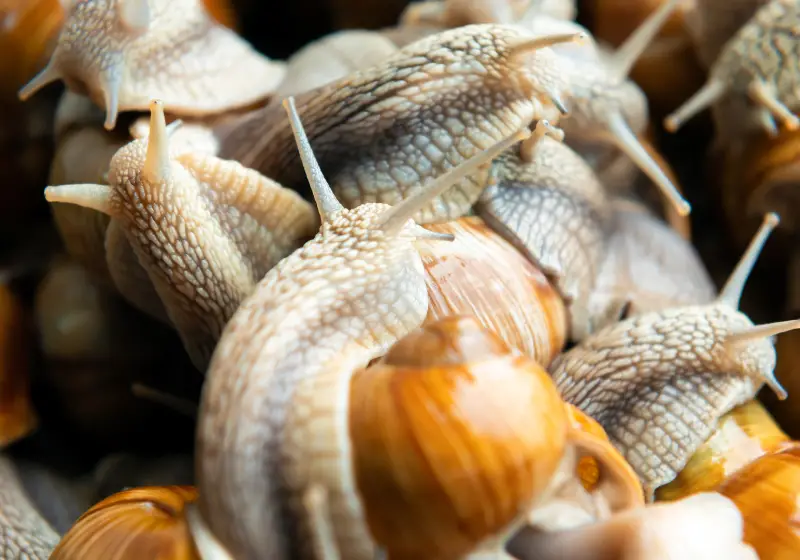
Reproduction in snails is an interesting process, as many snails are hermaphroditic, meaning they possess both male and female reproductive organs. This unique characteristic plays a large role in the survival and propagation of snail species.
Your journey into the snail’s life cycle starts with fertilization. When snails reproduce, they can act as either the male or the female to exchange sperm with their partner. Sometimes, both snails involved in the process act as both male and female, exchanging sperm simultaneously. This process increases the likelihood of successful fertilization and the production of offspring.
As the fertilized eggs develop, they go through various developmental stages. The early development of snails typically involves a cleavage process that forms blastomeres and micromeres. Cytoplasmic factors within the oocyte control this intricate process.
After the eggs have developed, they enter the larval stage. During this stage, snail larvae evolve and gain new features crucial to their survival. When considering snail reproduction, it’s essential to remember that snail species can be either terrestrial or aquatic, and the larval stage of each type differs accordingly.
Finally, the juvenile snails enter the adult stage, where they reach sexual maturity and can reproduce. The time it takes for snails to reach this stage varies between species. Still, one thing is clear: snails’ fascinating reproductive process and life cycle play a significant role in their ability to adapt and thrive in various environments.
Yes, snails and slugs are related. They both belong to the Gastropoda class, a part of the Mollusca phylum. While snails have a shell, slugs do not. They both move using a muscular foot and share similar habitats under rocks, in soil, and amidst vegetation where moisture is present [source](https://www.epicgardening.com/is-a-snail-an

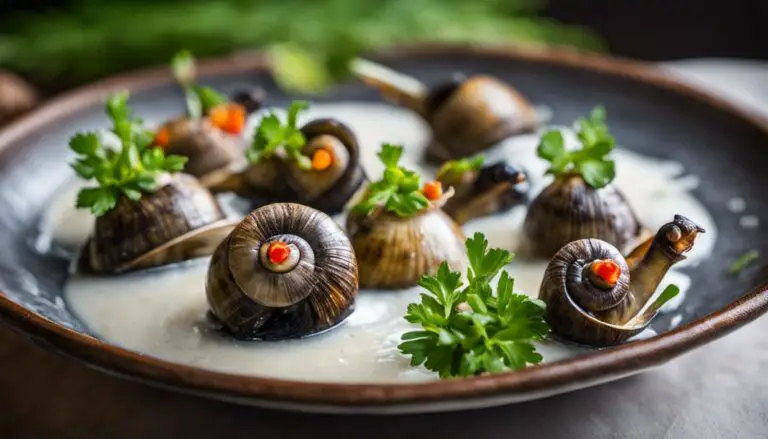

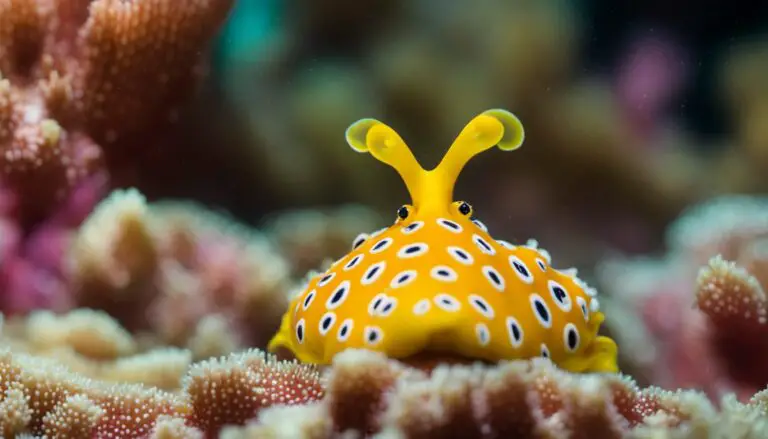
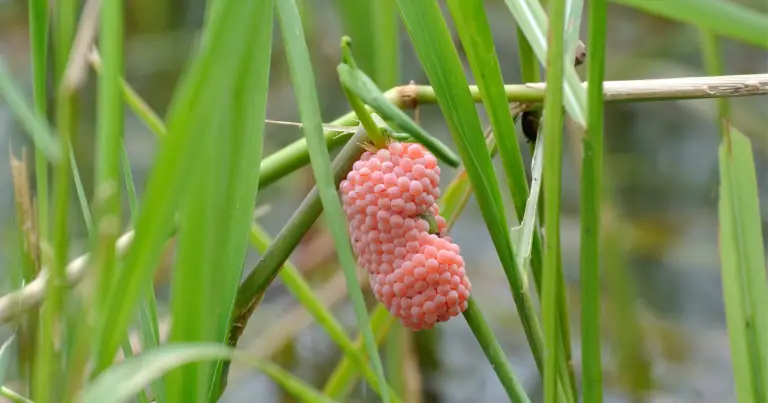
![Can Snails Swim? [Complete Answer]](https://allourcreatures.com/wp-content/uploads/2021/10/snails-swim-768x512.jpg)
